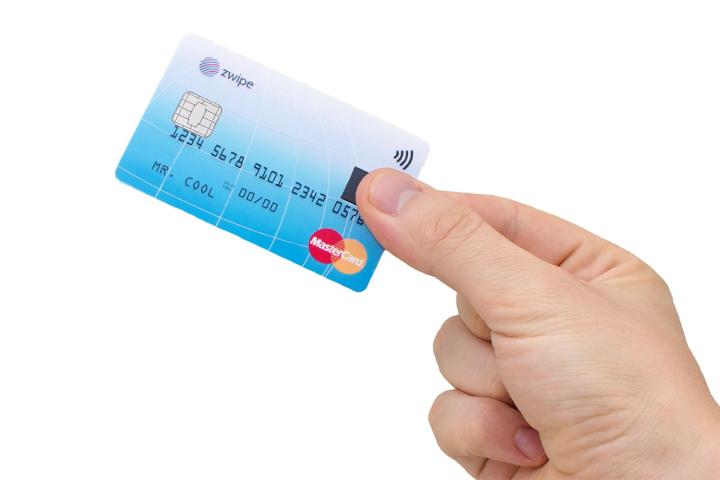
Customers in Norway tested the Zwipe MasterCard and now the product is finally ready for a big launch. The first prototype of the card looked big and bulky, mainly because it had a battery onboard. Now Zwipe has whittled down the prototype design to the size of a standard credit card. The card sports an EMV certified secure element, which is also known as the Chip, and MasterCard’s contactless application. Typically, cards with an EMV chip onboard must also use a PIN. PINs are still too easy to steal or change, so Zwipe added a fingerprint sensor to the card. After all, it’s much harder to steal someone’s fingerprint than it is to steal their PIN.
Related: All of these retailers and banks will support Apple Pay

The Zwipe card no longer has a battery and the company says it will harvest energy from payment terminals instead, so you don’t have to worry about charging your credit card — thank goodness.
The Zwipe MasterCard works just like tap-to-pay with Apple Pay — You simply tap your card against the NFC-enabled payment terminal, press your fingerprint to the sensor, and you’ve paid for your purchase. Of course, contactless payments have been around for a long time, but Zwipe says that its card is the first to incorporate a fingerprint sensor and eliminate the need for a PIN.
Zwipe plans to release its new card with MasterCard in 2015 and says the card will work on all NFC-enabled payment terminals. An upcoming law change in the United States will incentivize the use of EMV cards. As such, most merchants are expected to install new payment terminals that will support contactless payments.
Editors' Recommendations
- Apple, Goldman Sachs credit card partnership to end, report claims
- Xiaomi patents full-screen fingerprint technology for phones
- I hope the iPhone 13 has a fingerprint sensor as good as the Galaxy S21’s
- In-display fingerprint sensors are coming to cheap phones with LCD screens
- Master Lock’s fingerprint-secured padlock means never losing fiddly keys again


